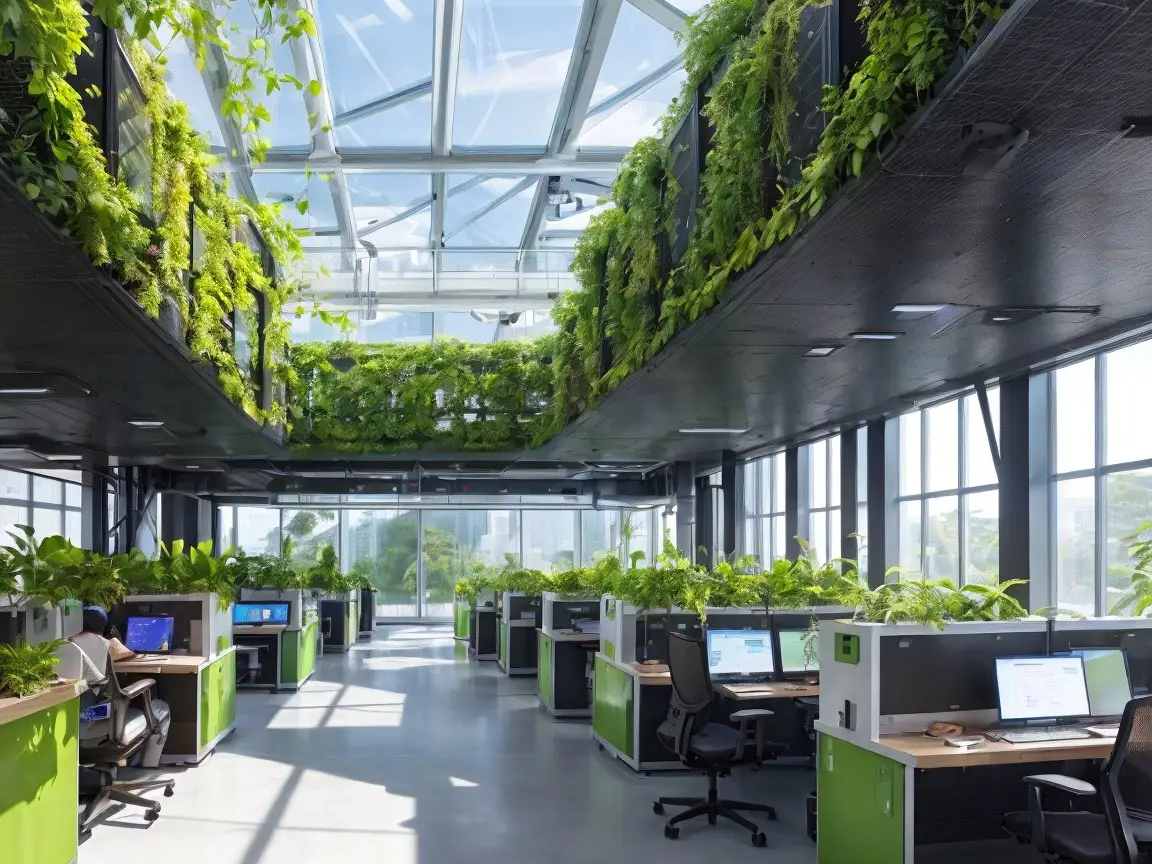As the world faces increasing environmental challenges, sustainability in engineering has become more important than ever. Engineers are at the forefront of developing innovative solutions to reduce the impact of industries on the planet. From renewable energy systems to sustainable materials and energy-efficient designs, sustainable engineering is not only a necessity for the future but also a driving force in shaping a cleaner, greener world. In this article, we will explore key innovations and practices in sustainable engineering and their potential to transform industries for the better.
1. Renewable Energy Systems: Powering the Future 🌞💨
One of the most significant areas of sustainable engineering is the development of renewable energy sources. As fossil fuels continue to deplete and contribute to climate change, engineers are focused on harnessing energy from natural, renewable sources. Here are some of the leading renewable energy systems:
- Solar Power: Photovoltaic (PV) panels have become a widely adopted solution for generating electricity from sunlight. With advances in solar panel efficiency and energy storage, solar power is a key player in reducing dependence on traditional energy sources.
- Wind Power: Wind turbines are a proven and effective way to generate electricity. Wind farms, both onshore and offshore, have seen exponential growth, making wind energy one of the most reliable renewable sources.
- Hydropower: Hydropower remains one of the oldest and most reliable renewable energy sources. Engineers are now working on innovative approaches to small-scale and micro-hydropower systems, which can be implemented in rivers and streams to generate clean energy.
By investing in renewable energy systems, engineers are contributing to a future where energy is sustainably sourced, reducing the environmental footprint of traditional power generation methods.
2. Sustainable Materials: Building a Greener Tomorrow 🏗️🌱
The materials used in construction, manufacturing, and product design significantly impact the environment. Engineers are exploring sustainable materials that are both eco-friendly and high-performing. These materials help reduce waste, energy consumption, and carbon emissions.
- Recycled Materials: Using recycled materials, such as recycled metals, plastics, and concrete, helps reduce waste and the demand for new raw materials. Engineers are developing methods to create high-quality products from recycled materials, ensuring that they meet the required performance standards.
- Biodegradable Materials: In industries like packaging and consumer goods, biodegradable materials are replacing traditional plastics. These materials break down naturally, reducing plastic waste and its impact on wildlife.
- Sustainable Concrete: Traditional concrete has a high carbon footprint due to the energy-intensive production of cement. Engineers are developing alternative concrete mixtures, such as geopolymer concrete, which use lower-energy materials and produce fewer emissions.
Sustainable materials are essential in building infrastructure and products that have a minimal environmental impact, ensuring that the construction and manufacturing sectors contribute to a sustainable future.
3. Green Building Practices: Designing for Sustainability 🏢🌿
In architecture and construction, green building practices focus on creating structures that are energy-efficient, environmentally friendly, and resource-conserving. These practices help reduce a building’s carbon footprint, energy consumption, and overall environmental impact. Some of the key elements of green building include:
- Energy-Efficient Design: Using passive design strategies, such as maximizing natural light, improving insulation, and incorporating energy-efficient HVAC systems, can significantly reduce the energy consumption of buildings.
- LEED Certification: The Leadership in Energy and Environmental Design (LEED) certification is a globally recognized standard for green building. Engineers and architects design and construct buildings with energy efficiency, water conservation, and indoor air quality in mind, striving to meet or exceed LEED standards.
- Green Roofs and Walls: Green roofs and walls use vegetation to improve air quality, provide insulation, and reduce the urban heat island effect. These innovations not only promote sustainability but also enhance the aesthetic value of urban spaces.
By incorporating green building practices, engineers are transforming how buildings interact with their environment, promoting energy efficiency, and creating more sustainable urban areas.
4. Waste Management and Recycling: Engineering Solutions for a Circular Economy ♻️🔄
Waste management and recycling are vital components of sustainable engineering. Engineers are developing new technologies and systems to reduce waste generation and encourage recycling. The goal is to create a circular economy where materials are reused and recycled, reducing the need for virgin resources and minimizing waste.
- Waste-to-Energy Systems: Engineers are developing systems that convert waste into energy. These systems use technologies like incineration, gasification, and anaerobic digestion to generate electricity or heat from organic waste.
- Recycling Technologies: Advances in recycling technologies are making it easier to separate, clean, and repurpose materials like plastics, metals, and textiles. New sorting technologies and innovations in chemical recycling are improving the efficiency of recycling processes.
- Zero-Waste Manufacturing: Engineers are working towards zero-waste manufacturing, where all materials are reused or recycled, and no waste is sent to landfills. This approach is gaining traction in industries like electronics and automotive manufacturing.
Waste management and recycling technologies are essential for reducing pollution, conserving resources, and creating a more sustainable and circular economy.
5. Water Conservation and Management: A Precious Resource 💧🌎
Water is one of the most vital resources on the planet, yet it is often wasted or polluted. Engineers are developing innovative solutions for water conservation and efficient water management to address growing concerns about water scarcity and pollution.
- Water Recycling and Reuse: Advanced water treatment and filtration technologies allow wastewater to be treated and reused for irrigation, industrial processes, or even drinking water in some cases.
- Desalination: Desalination technologies remove salt and other impurities from seawater, providing a source of fresh water in areas with limited natural water resources.
- Smart Irrigation Systems: Using sensors and data analytics, smart irrigation systems optimize water usage in agriculture, reducing water waste while maintaining crop health.
By focusing on water conservation and management, engineers are helping ensure that future generations have access to clean and safe water.
6. Sustainable Transportation: Reducing Emissions and Enhancing Mobility 🚗⚡
Transportation is a major contributor to global greenhouse gas emissions. Engineers are developing sustainable transportation solutions that reduce emissions, promote energy efficiency, and improve mobility.
- Electric Vehicles (EVs): Electric vehicles are revolutionizing the transportation industry by offering a cleaner alternative to gasoline and diesel-powered cars. Engineers are focused on improving battery technology and expanding the EV charging infrastructure.
- Public Transit Innovations: Modernizing public transit systems, such as buses, trains, and trams, can significantly reduce emissions and improve urban mobility. Sustainable transportation options like electric buses and high-speed trains are becoming increasingly popular.
- Shared Mobility: Car-sharing and ride-sharing services are reducing the number of vehicles on the road, which helps reduce traffic congestion and lowers emissions. Engineers are creating more efficient algorithms and platforms to optimize these services.
Sustainable transportation innovations are key to reducing emissions, improving air quality, and building more livable cities.
Conclusion: Engineering a Sustainable Future 🌱🔧
Sustainable engineering is not just a trend—it is a necessity for addressing the environmental challenges of the 21st century. Through innovations in renewable energy, sustainable materials, green building practices, and more, engineers are leading the way toward a more sustainable future. As technology continues to advance, the potential for sustainable solutions in engineering will only grow, enabling us to create a world where economic growth, environmental protection, and social well-being coexist harmoniously.
Internal Links:
- Explore More About Sustainable Engineering Innovations
- Learn About Renewable Energy Systems in Engineering
External Links:
- Learn more about LEED Certification on U.S. Green Building Council.
- Discover more on Solar Power Solutions at Solar Energy Industries Association.

